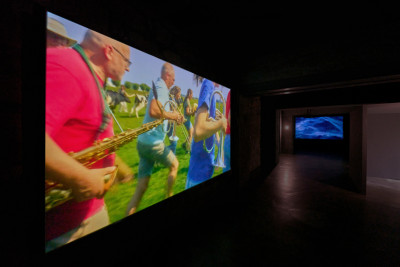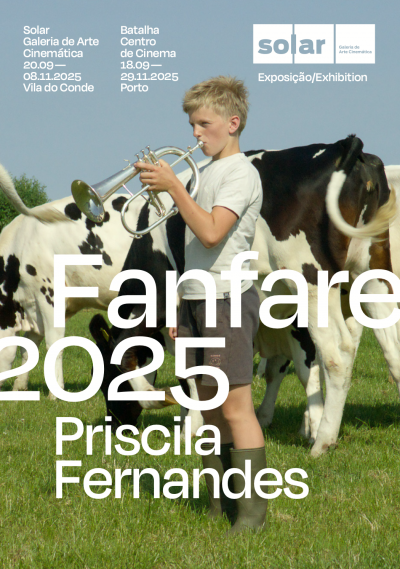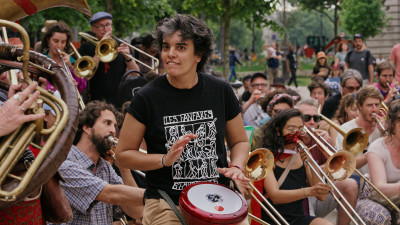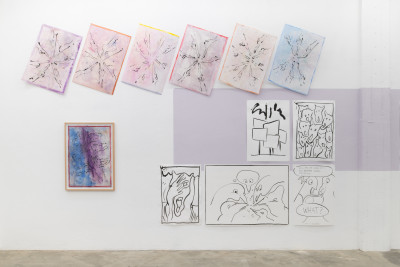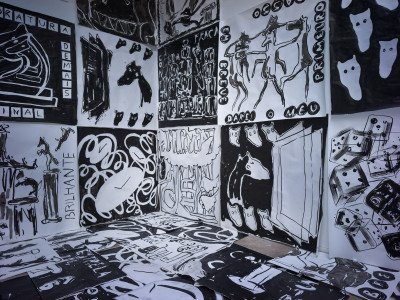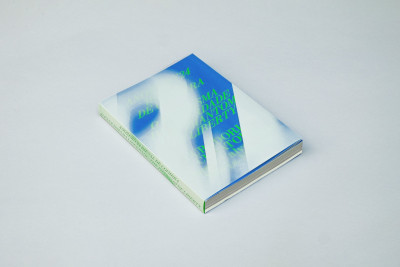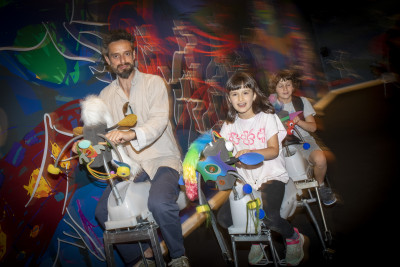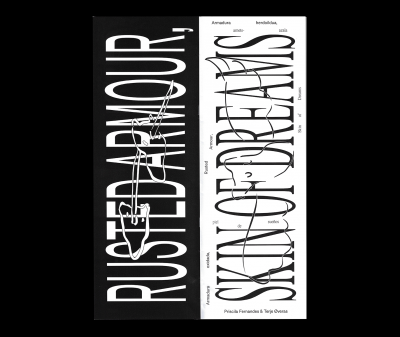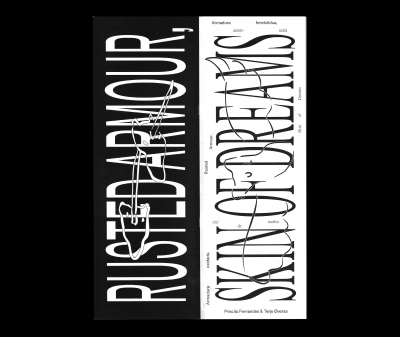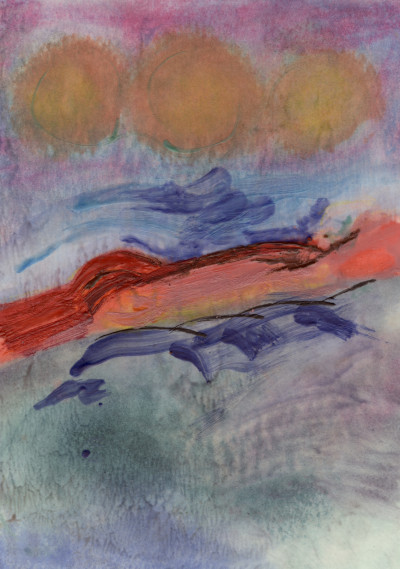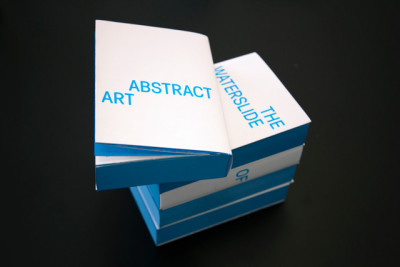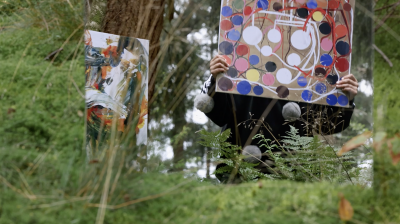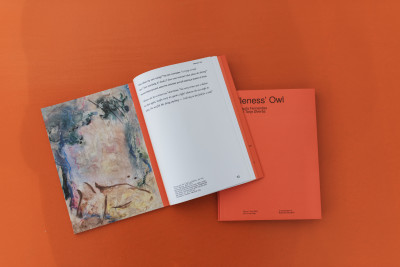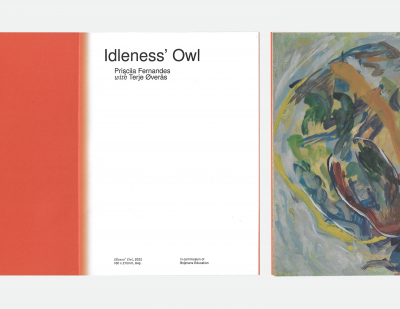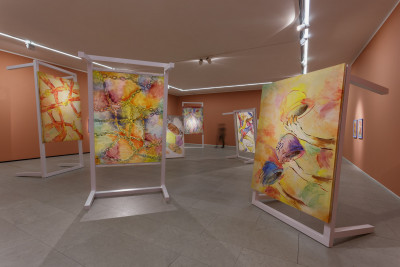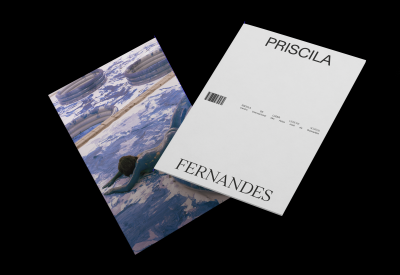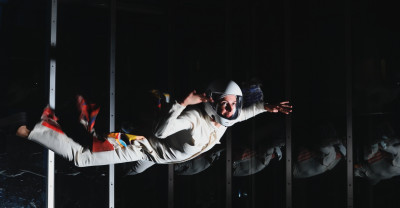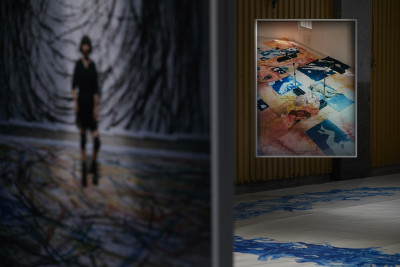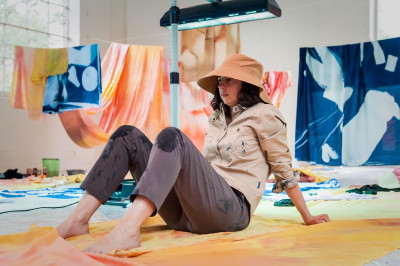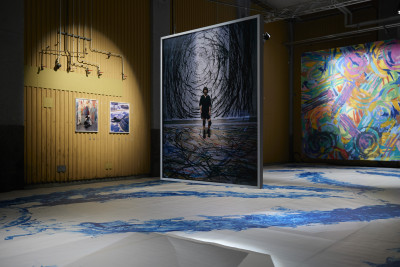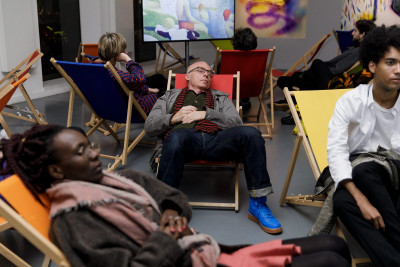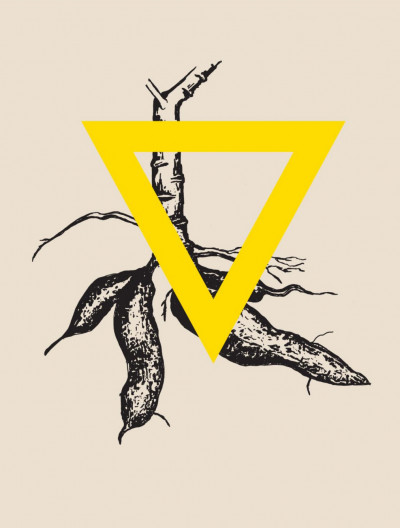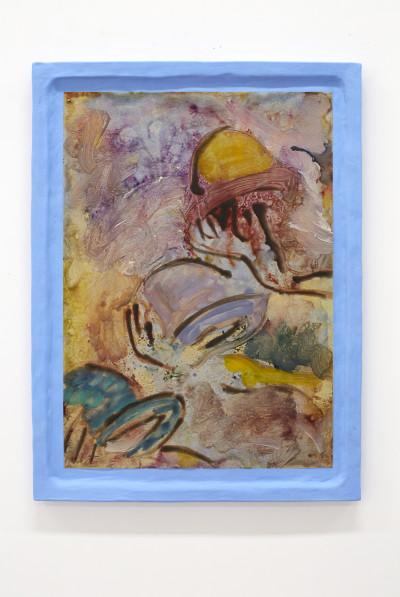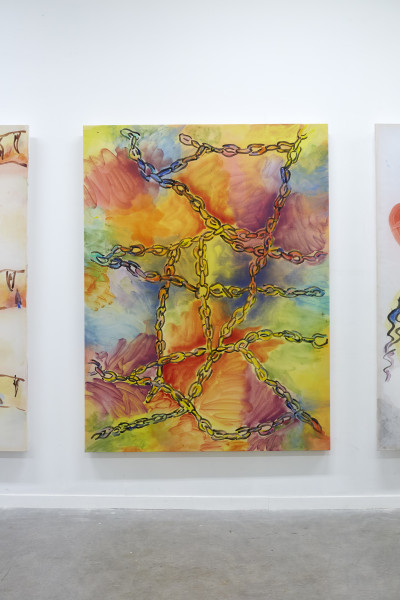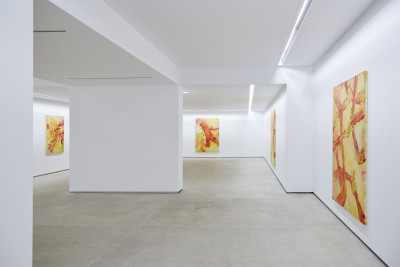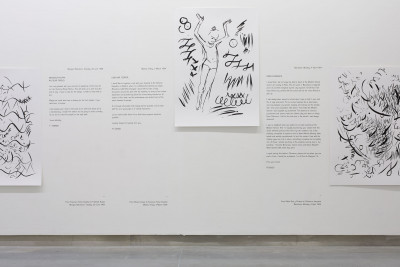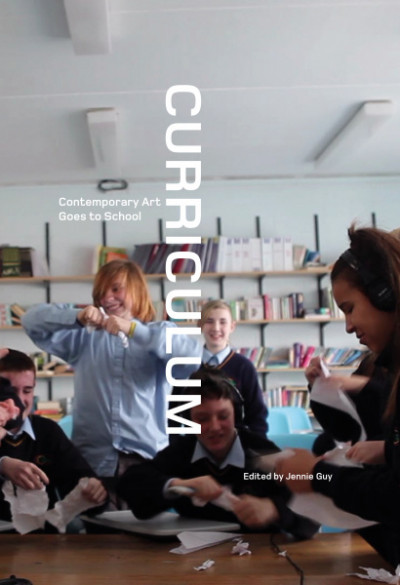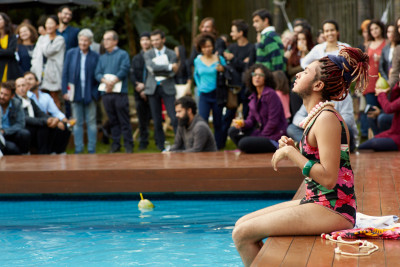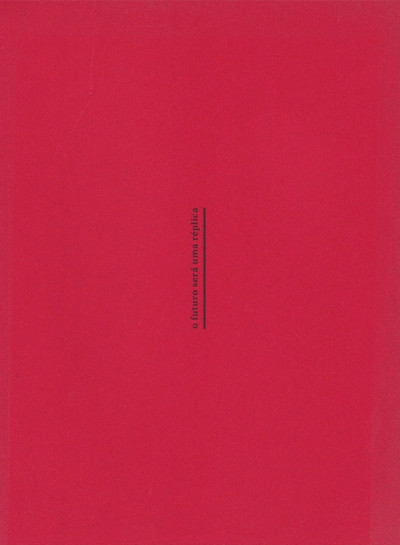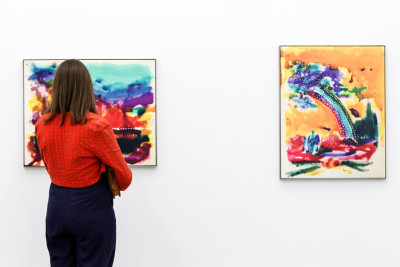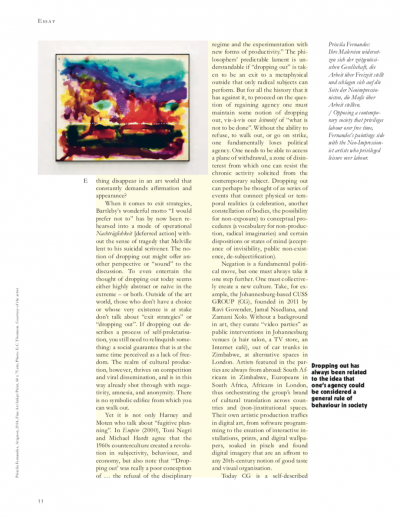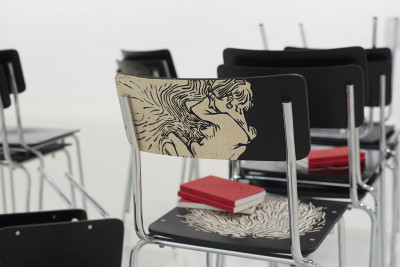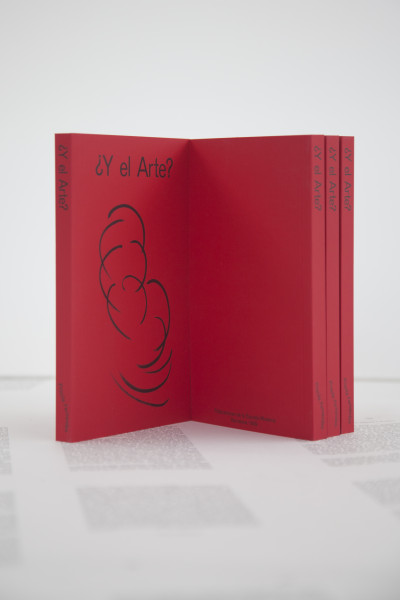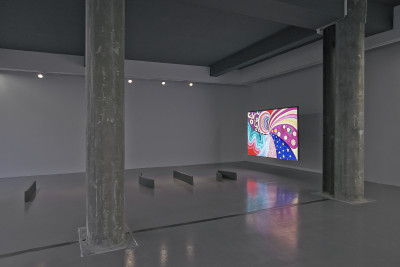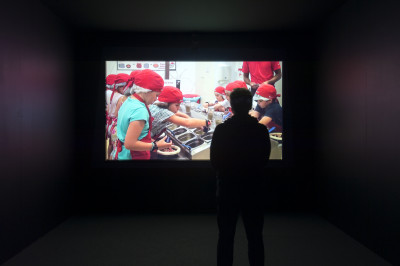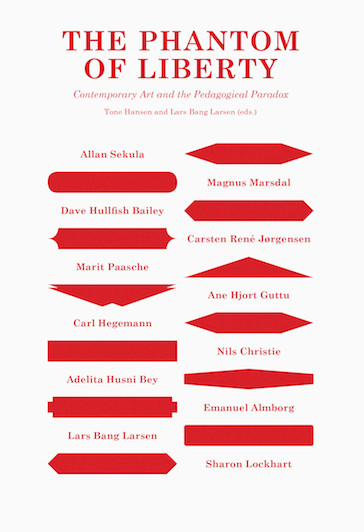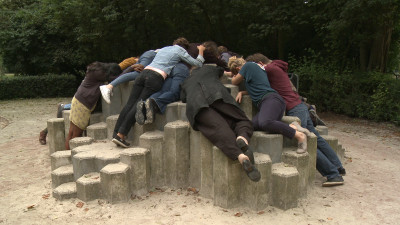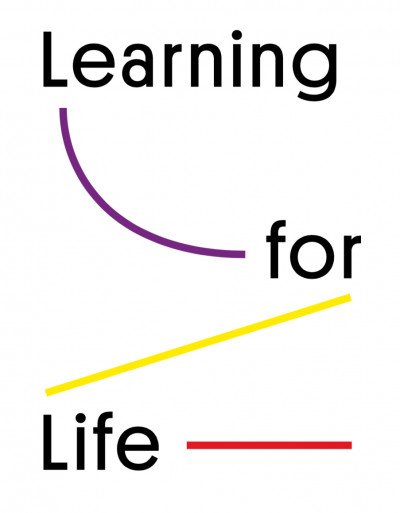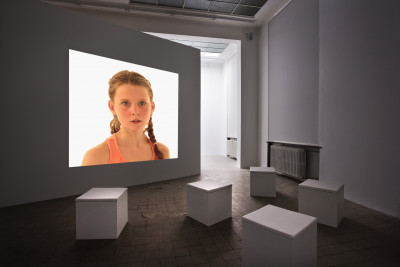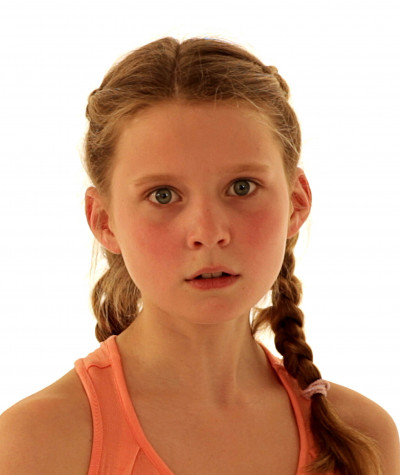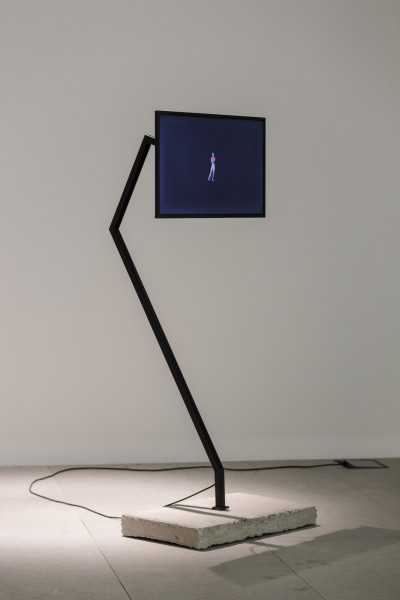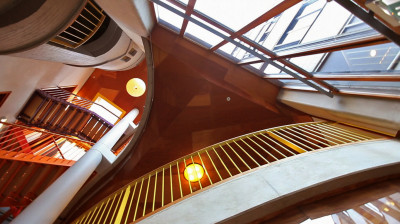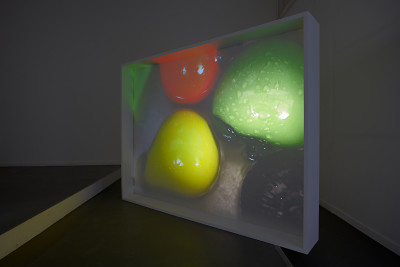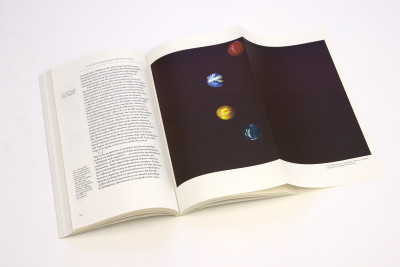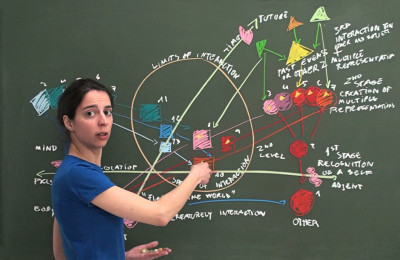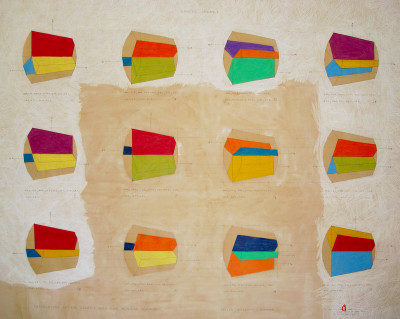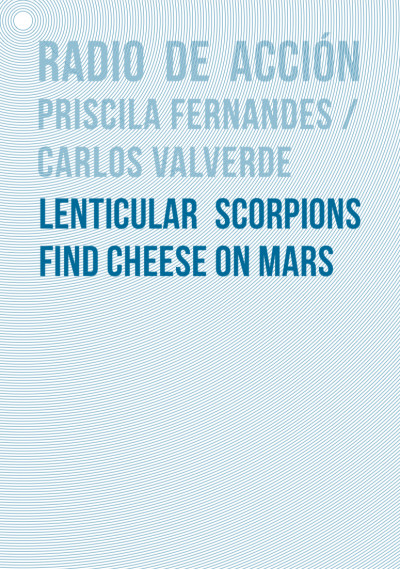Paula Ferreira
In the occasion of the Phantom of Liberty - Anozero Biennial 2024
Published in 2024
How many horses does it take to change the world? subverts, through a playful language, symbols related to the idea of power. Composed of two panels of drawings facing each other, the installation forms a passage space. Framed in a checkered pattern, a juxtaposition of antagonistic situations is divided into “houses” of opposite colors — a metaphorical perspective that harks back to the way in which, both in life and in board games, luck or misfortune can be cast by the randomness of a roll of the dice.
In dialoge with Western iconography, the image of the horse and its pedestal formulates a satire on the structures that socially and ideologically organize contemporary life (work, prison, school, etc). Traditionally related to naratives of domination, heroism, authority, and strength, the represented horses emerge freed from such connotations. They are figures that possess an almost human condition by performing a set of activities that in contemporary reality belongs either to the privileged sphere of leisure or to the underprivileged one of misfortunes.
By dancing while playing tambourine, bathing in flowing fountains, and imitating ghosts as children do with sheets, the horses portrayed in the white houses contrast with those that inhabit the black houses, facing rough seas, sinking in ships, and suffering in dark futures. Pointing to the absurdity of existence and the orders that condition it, to the game as a space for social critique, and to the fragility of an increasingly polarized and fragmented present, the work proposes a critical reflection.
In reference to the ubiquitous joke setup, How many horses does it take to change the world? encompasses the representation of contrasting mundane situations to question the idea of individual and collective freedom, to remind of the imminent threat of violence hanging over contemporary societies, and to challenge the arbitrariness that permeates human existence.
The work was commissioned for the 5th edition of Anozero - Coimbra Biennial, The Phantom of Liberty, curated by Ángel Calvo Ulloa and Marta Mestre, with the support of Mondriaan Fonds.
READ MORE...
Paula Ferreira
Published in 2024
Quantos cavalos são necessários para mudar o mundo? subverte, através da linguagem lúdica, símbolos relacionados com a ideia de poder. Composta por dois paineis de desenhos que se defrontam, a instalação arquiteta um espaço de passagem para o público. A partir de um padrão axadrezado, há uma contraposição de situações antagônicas que se divide em “casas” de cores opostas — uma perspectiva metafórica que remonta a maneira com que, tanto na vida quanto nos jogos de tabuleiro, a sorte, ou o azar, podem ser definidos pela aleatoriedade de um lance de dados.
Em uma correspondência dialógica com a iconografia ocidental, é a partir da imagem do cavalo e do pedestal que a obra formula uma sátira sobre as estruturas que organizam social e ideologicamente a vida contemporânea (o trabalho, a prisão, a escola, etc). Tradicionalmente relacionados com os imaginários acerca da dominação, do heroísmo, da autoridade e da força ostensiva, os cavalos representados surgem libertos de tais conotações. São figuras que, atribuídas a uma condição quase humana, exercem um conjunto de atividades que, na realidade contemporânea, pertencem ou à esfera privilegiada do lazer, ou àquela desprivilegiada dos infortúnios.
Ao dançar enquanto tocam pandeiro, se banhar em fontes caudalosas e imitar fantasmas como as crianças fazem com lençois, os cavalos retratados nas casas brancas contrapõem aqueles que povoam as casas pretas, os quais enfrentam mares revoltosos, naufragam em navios e padecem em futuros obscuros. Apontando para o absurdo da existência e das ordens que a condicionam, para o jogo enquanto espaço de crítica social e para a fragilidade de um presente cada dia mais polarizado e fragmentado, o trabalho propõe uma reflexão crítica.
Em referência à anedota popularmente conhecida, Quantos cavalos são necessários para mudar o mundo? abrange a representação de situações mundanas que se contrastam, para questionar a ideia de liberdade individual e coletiva, relembrar a iminente ameaça de violência que paira sobre as sociedades contemporâneas e desafiar a arbitrariedade que permeia a existência humana.
A obra foi comissionada pela 5a edição de Anozero - Bienal de Coimbra, O Fantasma da Liberdade, com curadoria de Ángel Calvo Ulloa e Marta Mestre, com o apoio da Mondriaan Fonds.
READ MORE...
